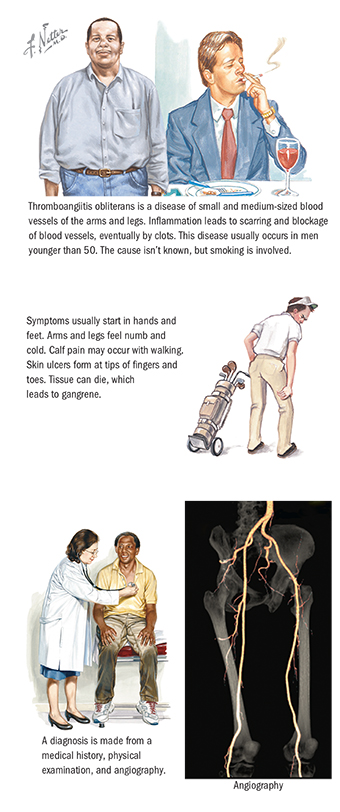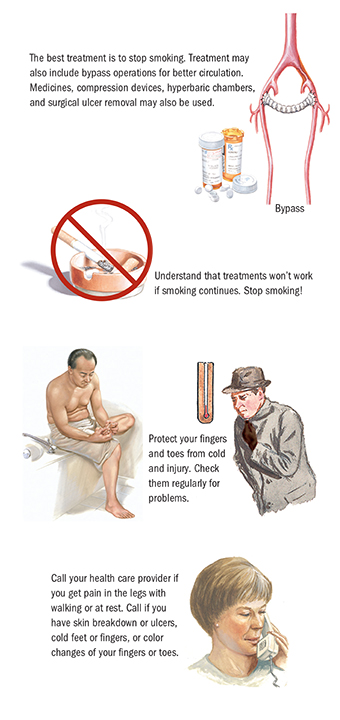
Thromboangiitis obliterans, also known as TAO or Buerger’s disease, is a disease of small and medium-sized blood vessels of the arms and legs. Inflammation leads to scarring and blockage of blood vessels, eventually by clots. Affected areas have poor blood flow. This disease is most common in men younger than 50 who abuse tobacco products. It’s a rare cause of poor circulation.
The cause is unknown. However, the disease is found only in tobacco smokers. If smoking continues, the disease gets worse; if smoking stops, the disease often improves. It’s not contagious and doesn’t seem to be inherited. It is most common in the Middle East, the Far East, and Asia. In the U.S., it occurs in about 10 to 20 people for every 100,000.
Symptoms usually start in hands and feet. Arms and legs feel numb and cold. Calf pain may occur with walking (claudication). Skin ulcers can form and are due to low blood flow. Ulcers occur at tips of fingers and toes. Tissue there can become necrotic (dead), which leads to gangrene and maybe amputation.
The health care provider makes a preliminary diagnosis from the medical history and physical examination. Migratory thrombophlebitis is common. This thrombophlebitis is the presence of small blood clots that move from one spot to another. Angiography can help confirm the diagnosis. In this test, a catheter (tube) is put into the blood vessel of the affected limb, dye is injected into it, and a picture of the blood vessel is taken. Echocardiography may be done to make sure that clots aren’t forming inside the heart and traveling to blood vessels in the legs.

The best treatment is to stop smoking. If smoking continues, the disease becomes worse. Skin ulcers, necrotic fingers and toes, and gangrene can occur. Amputation may be needed. Treatment may also include bypass operations for better circulation and surgery to cut nerves that may cause blood vessel constriction. Medicines may be used to dilate blood vessels, improve blood flow, or dissolve clots. Compression devices may improve calf blood flow. Hyperbaric chambers and surgical ulcer removal may also be used.
Contact the following source:
Copyright © 2016 by Saunders, an imprint of Elsevier, Inc.
Ferri’s Netter Patient Advisor